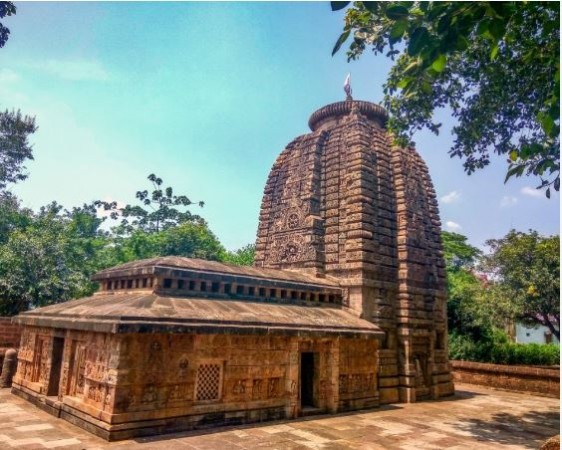
Parsurameswara Temple is the nestled in heart and capital of Odisha, Bhubaneswar dedicated to Lord Shiva. It is one of the oldest temples. It is a living testament to the rich cultural heritage and architectural prowess of the region. It represents the culmination of Odishan temple architecture and its profound connection to spirituality and artistry. With its intricate carvings, elegant proportions, and spiritual significance, the Parsurameswara Temple offers a glimpse into the artistic and religious fervor that defined ancient Odisha.
The Parsurameswara Temple is believed to have been constructed in the 7th century during the Bhauma-Kara dynasty rule. This period marked a significant phase in the evolution of Odishan architecture, characterized by the shift from rock-cut caves to standalone structural temples. The temple's name is derived from its presiding deity, Lord Shiva, who is also known by the name "Parsurameswara," a manifestation of Shiva as a fierce warrior. Parsurameswara temple was built by the Shailodbhavas who had Shiva as their family deity. The Shilodbhavas respected the Shakta deities and depicted Shakta images on the walls of the temple.
Also Read: Surat Charity Crafts Diwali Gifts: Ram Temple Models
The temple's architecture showcases the distinctive style that is synonymous with Odishan temples. It follows the rekha deula style, characterized by a square sanctum adorned with intricate carvings and a pyramidal tower (vimana) that gradually narrows as it rises. The sanctum enshrines a Shiva Linga, symbolizing Lord Shiva, while the exterior is adorned with sculptures depicting various mythological scenes, deities, and celestial beings.
The temple's main entrance is a masterpiece in itself, featuring a towering arched gateway (torana) adorned with delicate carvings of divine figures, celestial dancers (apsaras), and floral motifs. The lintel above the doorway showcases a remarkable depiction of Lord Shiva's cosmic dance, known as the "Tandava," illustrating his role as both the creator and destroyer of the universe.
One of the defining features of the Parsurameswara Temple is its intricate and elaborate carvings. The temple is adorned with bas-reliefs that narrate various mythological stories from the Ramayana, Mahabharata, and Puranas. The outer walls depict scenes of gods, goddesses, celestial beings, and various forms of Shiva in his different manifestations.
Also Read: ISKCON Temple, Bangalore: A Divine Haven of Spirituality
The detailed sculptures not only showcase the exceptional craftsmanship of the artisans but also provide insights into the religious and cultural beliefs of the time. The carvings are imbued with a spiritual aura, inviting devotees and art enthusiasts alike to reflect on the ancient tales and philosophies they convey.
The Parsurameswara Temple holds immense spiritual significance for the local community and pilgrims. As a place of worship dedicated to Lord Shiva, it attracts devotees seeking blessings, solace, and a deeper connection to their faith. The temple complex exudes an air of tranquility and spirituality, allowing visitors to immerse themselves in a serene atmosphere conducive to meditation and introspection.
Over the centuries, the Parsurameswara Temple has weathered the test of time, enduring both natural forces and human interventions. Various restoration efforts have been undertaken to preserve its architectural brilliance and cultural heritage. The temple's significance has been recognized by UNESCO, which has included it as a part of the "Bhubaneswar and Konark: A World Heritage Site."
Also Read: Multan Sun Temple: A Forgotten Marvel of Ancient Pakistan
In addition to its cultural and historical importance, the temple serves as an invaluable educational resource for scholars, architects, and enthusiasts interested in understanding the evolution of Odishan temple architecture and the intricate relationship between art and spirituality.
The Parsurameswara Temple stands as an awe-inspiring monument that speaks volumes about the artistic excellence, architectural innovation, and spiritual devotion of ancient Odisha. Its intricate carvings, divine iconography, and spiritual ambiance create a profound impact on all who visit. As the centuries roll on, the temple continues to inspire a sense of wonder and reverence, reminding us of the deep-rooted connections between culture, faith, and artistic expression.
Also Read: Ancient Wonders: Explore the Oldest Temples on Earth
From Shivling to Snake, Exploring Mystical Dreams of Bholenath
Laos: The Enchanting Jewel of Southeast Asia's Untouched Beauty